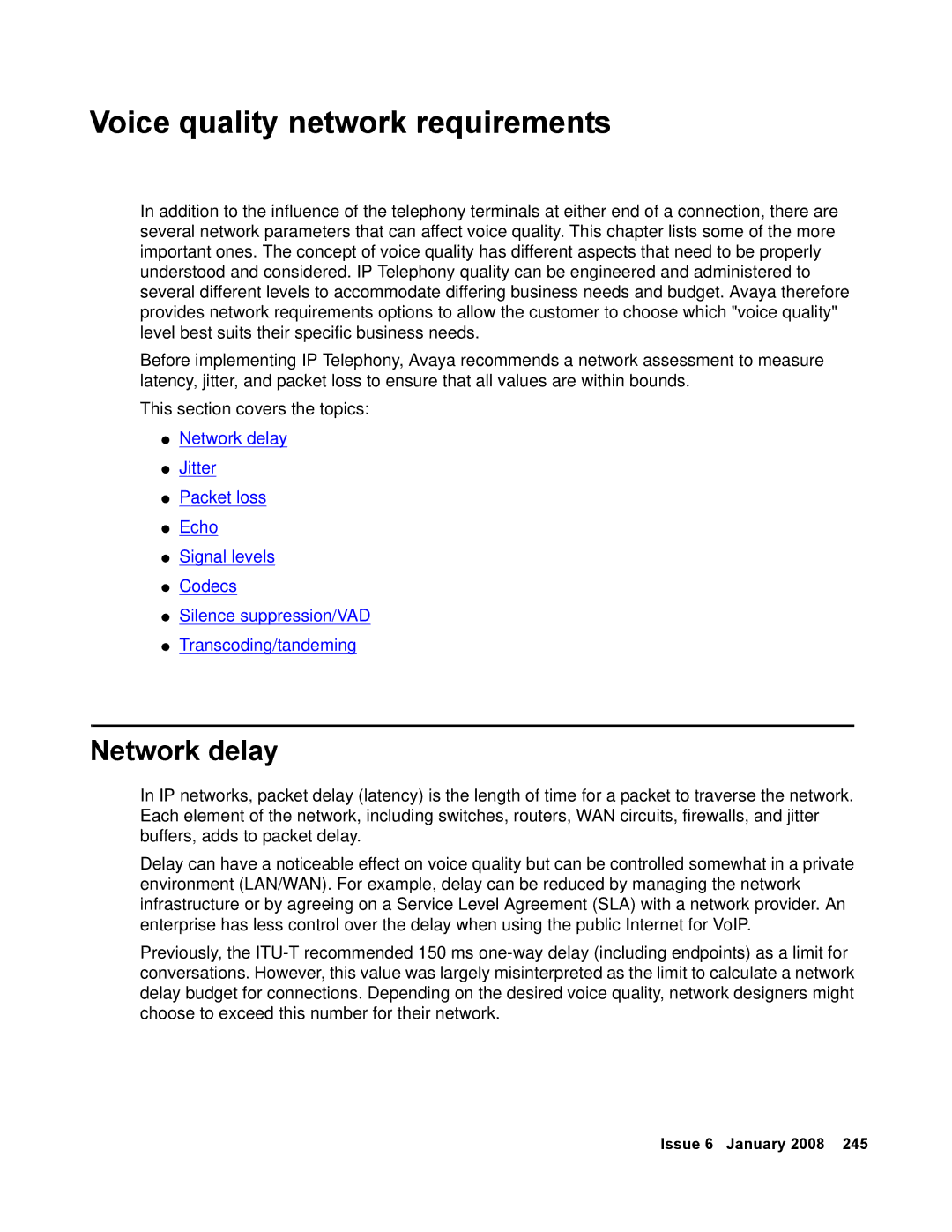Voice quality network requirements
In addition to the influence of the telephony terminals at either end of a connection, there are several network parameters that can affect voice quality. This chapter lists some of the more important ones. The concept of voice quality has different aspects that need to be properly understood and considered. IP Telephony quality can be engineered and administered to several different levels to accommodate differing business needs and budget. Avaya therefore provides network requirements options to allow the customer to choose which "voice quality" level best suits their specific business needs.
Before implementing IP Telephony, Avaya recommends a network assessment to measure latency, jitter, and packet loss to ensure that all values are within bounds.
This section covers the topics:
●Network delay
●Jitter
●Packet loss
●Echo
●Signal levels
●Codecs
●Silence suppression/VAD
●Transcoding/tandeming
Network delay
In IP networks, packet delay (latency) is the length of time for a packet to traverse the network. Each element of the network, including switches, routers, WAN circuits, firewalls, and jitter buffers, adds to packet delay.
Delay can have a noticeable effect on voice quality but can be controlled somewhat in a private environment (LAN/WAN). For example, delay can be reduced by managing the network infrastructure or by agreeing on a Service Level Agreement (SLA) with a network provider. An enterprise has less control over the delay when using the public Internet for VoIP.
Previously, the
Issue 6 January 2008 245
